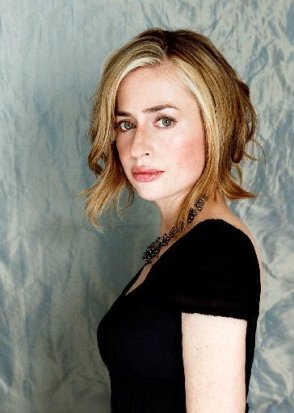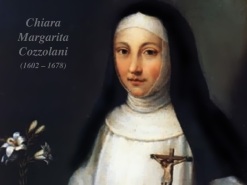Violinist Chloe Trevor plays music by Vivaldi and Piazzolla, Friday and Saturday
By Peter Alexander Nov. 29 at 9:25 p.m.
Violinist Chloe Trevor is above all true to herself.

Violinist Chloe Trevor
This weekend she will play music by two very distinct and different composers in concerts with conductor Bahman Saless and the Boulder Chamber Orchestra. The program features portions of the well loved Four Seasons of Baroque composer Antonio Vivaldi, combined with the complete Cuatro Estaciones Porteñas (Four Seasons of Buenos Aires) by the innovative composer of the “New Tango,” Argentine Astor Piazzolla.
The concerts—Friday evening in Broomfield and Saturday evening in Boulder—will also include the Suite for Strings by Czech composer Leoš Janáček.
While both Vivaldi and Piazzolla represent distinct styles—the 18th-century string style of Baroque Italy, and the sensual tango of early 20th-century Argentina—Trevor does not feel that she has to create strict versions of either. “I’m playing it more in my style than anything else,” she says.
She’s not saying you can play any way you want, but once you understand a style, you should play what you believe in. “You learn the rules so that you’re aware of them,” is how she explains it. “Once you’ve gotten used to it, you say, ‘Now, I’m going to put my own spin on the whole thing.’ If you’re trying to do it a different way, it sounds like you’re trying too hard.”

Astor Piazzola
Written as four separate pieces between 1965 and 1970, Piazzolla’s Seasons were originally composed for the composer’s own quintet. They were arranged for violin and orchestra as a companion to Vivaldi’s Seasons in the 1990s by Russian composer Leonid Desyatnikov. That version became something of a sensation in 1999 when violinist Gidon Kremer and his Kermerata Baltica ensemble recorded both the Vivaldi and the Piazzolla-Desyatnikov sets on a CD titled “Eight Seasons.”
“I got Kremer’s recording when it came out,” Trevor says. “I was in my early teens and I remember being completely fascinated by them. When I finally did get the first opportunity to perform it last year, I was just ecstatic.”
The Piazzolla Seasons are often performed separately, because putting the two sets together on one concert is a challenge. The Vivaldi set is four complete concertos, each comprising three movements, while each of the Piazzolla Seasons is a one-movement work in itself. Played together, both works complete would take at least an hour, which is certainly too long for a soloists’ portion of a standard orchestral concert.

Chloe Trevor
Trevor’s solution is to play the Piazzolla pieces framed by individual movements from Vivaldi. When she first got the music, “I took a few weeks to figure out an order that I wanted,” she says.
“The way I picked it was, what I felt was best to start and end with. It makes the most sense to start with the first movement of Vivaldi’s Spring—it’s one everyone’s familiar with, so it’s the best opener. And I wanted to end with the last movement of Vivaldi’s Summer. That’s the most bombastic movement—it’s a flashy ending. Unfortunately, none of the Piazzolla Seasonshave a great ender.”
In between, she arranged Vivaldi movements around the Piazzolla pieces based on connections that made sense to her. Here is what she settled on: The fist movement from Vivaldi Spring; Piazzolla Spring; a movement of Vivaldi Autumn; Piazzolla Autumn; a movement of Vivaldi Winter; Piazzolla Winter; a movement of Vivaldi Summer; Piazzolla Summer; and ending with the final movement of Vivaldi Summer.
Trevor believes it all makes sense when you hear it. As for switching between Baroque and contemporary tango styles, she says “the pieces are written in such a way that it’s not difficult to go between one and the other. They (each) have their own energy, so you get caught up in that.”

Bahman Saless
Saless noted that he has done music by Janáček before, but the Suite for Strings is harder than others he has done. “This is a difficult one,” he says.
“It has a lot of deep sentiment and you can tell he’s sort of experimenting with his own skill set as a string writer. But it’s got some absolutely gorgeous sonorities. It’s one of those pieces where you hear it and go, ‘Oh my God, why I have not heard that before?’”
Saless has often worked with Trevor’s father, conductor Kirk Trevor. Because of that, he has known Chloe since she was still a child studying with her mother, violinist Heidi Trevor, a member of the Dallas Symphony. Naturally, Saless and Chloe Trevor enjoy times when they can perform together.
“It’s always wonderful to work with Bahman,” Trevor says. “There’s a lot of dreams being realized. The (Vivaldi and Piazzolla Seasons) are such great pieces, and I couldn’t be more thrilled to be here and have a chance to play them again.”
# # # # #
 The Seasons
The Seasons
Boulder Chamber Orchestra, Bahman Saless, conductor
With Chloe Trevor, violin
Vivaldi/Piazzolla: Four Seasons
Janáček: Suite for Strings
7:30 p.m. Friday, Nov. 30, Broomfield Auditorium
7:30 p.m. Saturday, Dec. 1, Boulder Adventist Church

















 “For the nuns, what’s interesting to listen for is how it might have been sung by all women. This music is quite theatrical, but it’s also very much close harmony. It’s very beautiful in that way.”
“For the nuns, what’s interesting to listen for is how it might have been sung by all women. This music is quite theatrical, but it’s also very much close harmony. It’s very beautiful in that way.”

